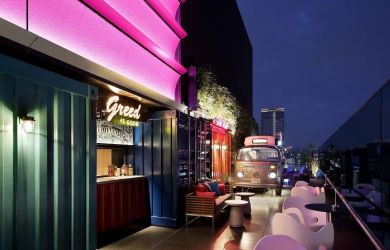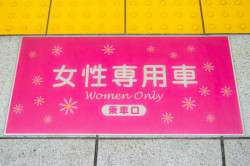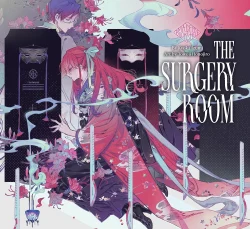
Originally published on metropolis.co.jp on January 2012


In high school, I was a member of a service organization that sometimes volunteered for the Ronald McDonald House in Phoenix, Arizona. It was relatively simple work, usually just cleaning the common area or performing simple maintenance tasks, but we enjoyed the feeling that even as teenagers—and strangers at that—we were able to help families deal with the difficult challenge of caring for a severely ill child.
So it was with a pleasant sense of nostalgia that I recently noticed posters and collection boxes in McDonald’s for a Ronald McDonald House in Tokyo. I picked up a brochure to peruse over breakfast, thinking the organization must be newly arrived in Japan, only to find that they’ve been here over a decade, operating seven houses across the country and with an eighth just recently opened.
The Ronald McDonald Houses, or Donald McDonald Houses as they are called in Japan, provide low-cost accommodation near medical facilities for families of severely- and terminally-ill children while they are receiving hospital care. The organization is a separate entity from the McDonald’s company, but the restaurant chain is one of their major donors.
“In Japan, the best medical facilities are in major cities, so children living in rural areas have to be away from home while they receive treatment,” says organization representative Mikako Yamamoto. “Aside from the medical bills, this forces families to divide their time and resources, creating a mental and financial burden. Our organization was created to help those children and their families.”
Rather than sleeping on hospital sofas and eating convenience store bento three meals a day—or bankrupting themselves with hotel and restaurant bills—families can get a place to stay, usually in walking distance to the hospital, for just ¥1,000 per person, per day.
The RMH philosophy is to create an atmosphere that is more comfortable and home-like than a hotel.
“We endeavor to equip the houses with the same comforts people have at home,” says Yamamoto. Guests have access to a large kitchen, bathing and laundry facilities, playrooms and living rooms.
The houses are decorated with donated handmade quilts and drawings, and volunteers greet and interact with families, not with stiff formality as hotel staff would, but more warmly and casually. The families also have a chance to interact with other guests in the common areas, allowing for a ready-made support system and playmates for the kids.
The first RMH in Japan was in Tokyo’s Setagaya ward, and the latest house, opened on December 8 last year and located on the grounds of the Tokyo University Hospital, is the second to open in the capital. It has 12 rooms and the same amenities as the other houses, with the advantage of being literally next door to the medical facilities, which alleviates the financial and logistical burden of staying in the heart of Tokyo. The RMH is also collaborating with the medical personnel in the operation of the house in order to best serve Tokyo University Hospital’s patients.
As my youthful time at the RMH shows, it doesn’t take any special skills to become a volunteer. Many people just do cleaning or light office work, but your local house can tailor an activity to your particular skill set, says Yamamoto.
“For example, if you are a stylist, you could come and provide free haircuts for the guests. Or if you know reflexology, you could do massage. There is any number of ways to help out.” Even if your schedule doesn’t allow for volunteering, you can make a difference just by donating the change from your Big Mac Value Set.
For more information, see www.dmhcj.or.jp.








